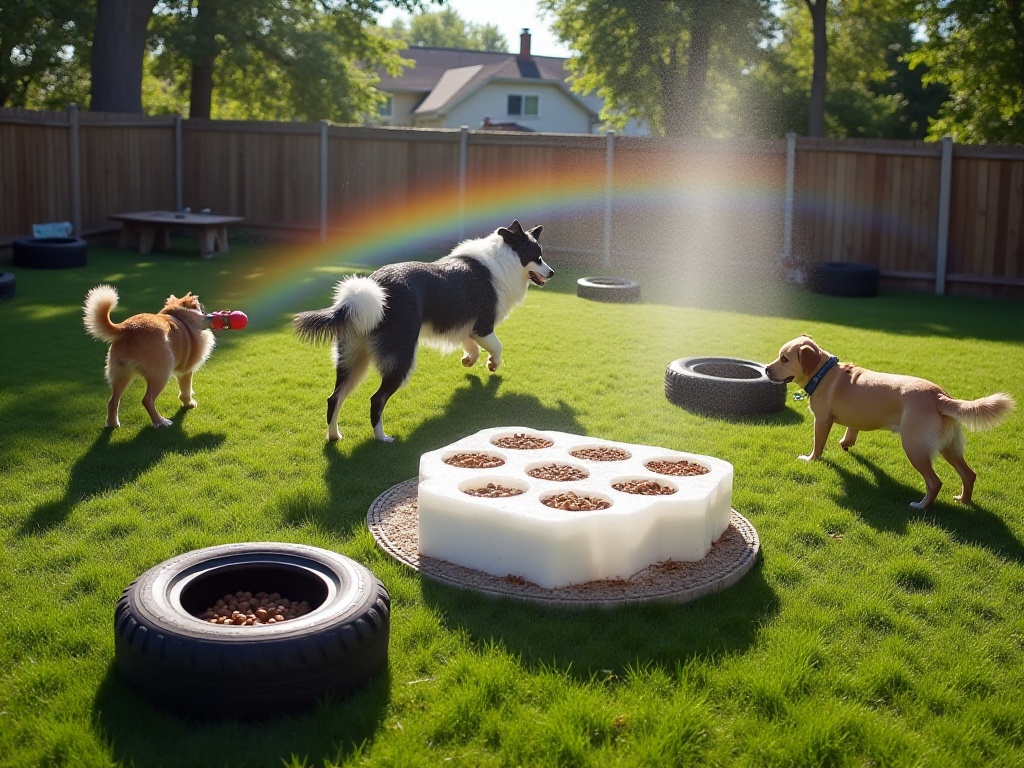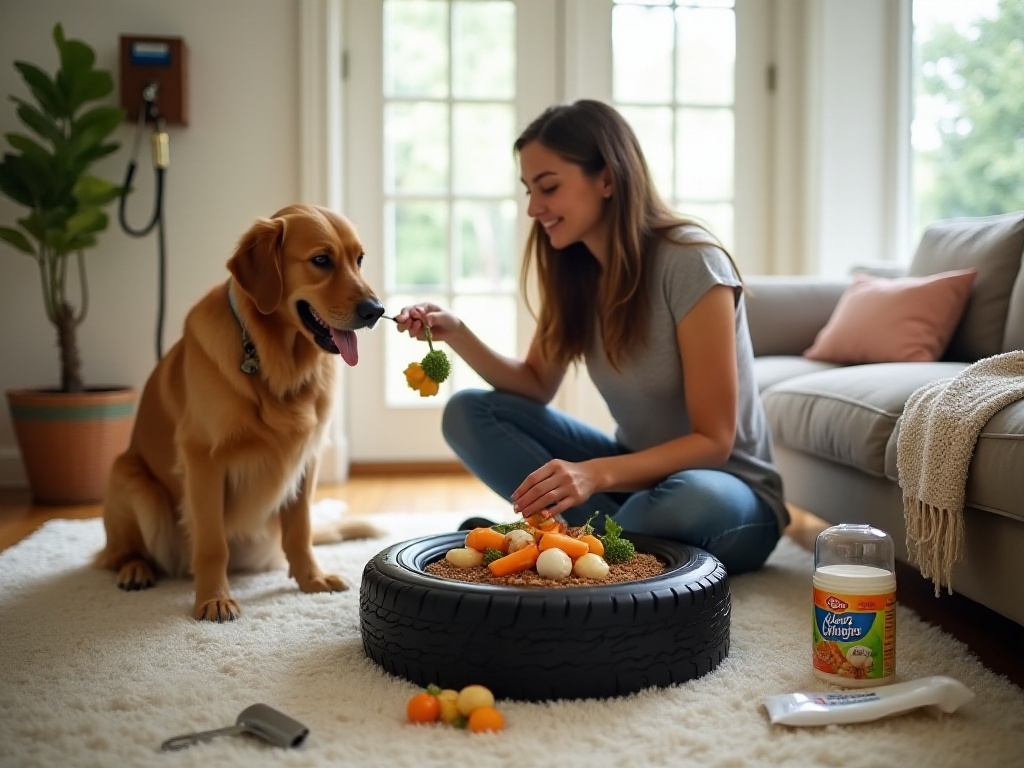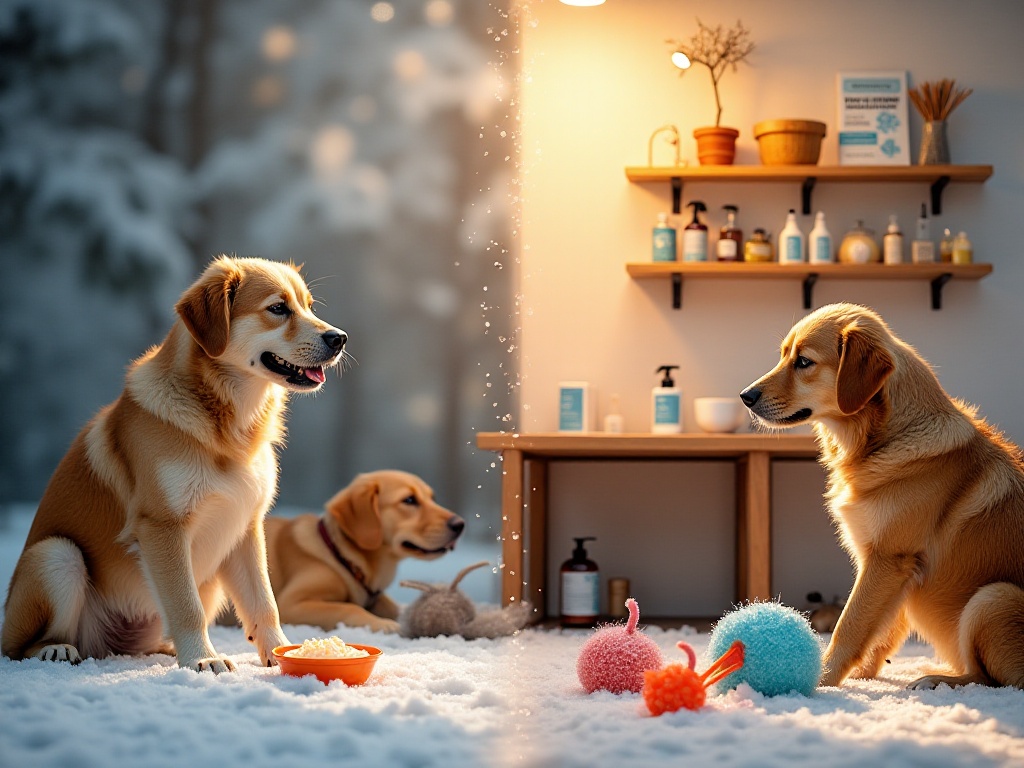Introduction
As an experienced pet parent with three cats and two dogs, I truly understand the challenges of pet ownership. Every morning, I wake up to floors covered in pet hair, face various unexpected situations during dog walks, and deal with problems like picky eating and lack of exercise. Don't worry though - after years of hands-on experience, I've developed a comprehensive set of solutions that I'd like to share with you in detail.
Fur Management
When it comes to the most frustrating aspects of pet ownership, flying fur throughout the house tops the list. You clean up, and moments later the floor is covered again, especially during shedding season - it can be truly overwhelming. But don't worry, I have several super effective cleaning methods.
First is using latex gloves, an absolute must-have for home use. I've tried many fur cleaning tools, but found the simplest option to be the most effective. Just wear regular household gloves and gently wipe over sofas, carpets, or beds - the fur magically sticks to the gloves. This happens because latex creates static electricity that effectively attracts fur. I recommend having dedicated gloves for this purpose, preferably textured ones for better cleaning results.
The second method is using a squeegee, which was a delightful discovery. Beyond window cleaning, squeegees have a hidden talent for pet fur removal. They're particularly effective for carpet edges and crevices, working even better than vacuum cleaners. I clean my carpets weekly with a squeegee. The principle is simple - the squeegee's soft yet firm rubber edge can reach deep into carpet fibers to pull out hidden fur.
Beyond these methods, I'll share some tips to prevent fur from spreading everywhere. Regular brushing is fundamental, but choosing the right brush is crucial. I recommend having two types: a pin brush for detangling and a metal-toothed comb for removing loose fur. Follow a proper brushing order - start with the pin brush working from outside in, then finish with the fine-toothed comb. It's best to brush on the balcony or in the bathroom for easier cleanup.
Nutrition is also important for reducing shedding. I regularly supplement with fish oil, which not only makes their coat shinier but also reduces shedding. When choosing fish oil, check the ingredients - deep-sea fish extract with high purity is best. Mix it into their food each morning; start with small amounts and gradually increase as they adjust.

Cleaning Tips
Regarding cleaning, dealing with pet "accidents" is the most challenging. Sometimes you've just finished cleaning when you discover a new "surprise." Don't worry though, I've developed a very effective set of handling methods.
First is dealing with urine stains. The baking soda and white vinegar combination is indeed magical, but the ratio and application method are crucial. I recommend preparing a dedicated spray bottle with three parts warm water to one part white vinegar. When you spot a stain, immediately absorb surface liquid with thick paper towels - remember not to rub, or you'll spread the stain. Then spray the vinegar solution evenly over the stain and wait a few minutes for it to penetrate. Next, sprinkle a thin layer of baking soda - you'll see it start to bubble, indicating a chemical reaction that effectively breaks down odors. After the bubbling stops, spray another round of vinegar solution and gently massage with a soft brush. Finally, vacuum up the dried baking soda.
For stubborn stains, I also spray a professional enzyme cleaner after the initial treatment. These cleaners contain proteins that completely eliminate remaining odors. Note that enzyme cleaners should be kept away from pets until completely dry.
Carrying baby wipes is indeed a good habit. I keep them at home, in the car, and in my bag. When choosing wipes, check the ingredients - select alcohol-free and fragrance-free options to avoid irritating your pet's skin. Besides cleaning dirty paws, wipes are great for wiping eye corners and mouth areas, especially when out.
Another particularly useful cleaning tool is a microfiber mop. Compared to regular mops, microfiber material not only catches fur but effectively cleans paw prints. I keep two mop heads - one for dry mopping fur, another for wet mopping floors. After use, they go straight into the washing machine - very convenient.
Diet Management
Diet management is truly a science. My dog used to wolf down food, which can lead to indigestion or even gastric torsion. I've discovered several effective methods to address this issue.
Placing a ball in the food bowl is a good idea, but choosing the right ball is important. Best to use rubber balls with textured surfaces that won't easily move aside. I've also found that turning the food bowl upside down works well, as many bowls have textured patterns on the bottom that help slow down eating.
For pets needing weight loss, beyond the green bean diet method, I have other suggestions. First is scientifically calculating portions - don't feed by feeling. I weigh each meal with a digital scale to strictly control calorie intake. For treats, replace regular ones with low-calorie vegetables like carrots and broccoli. Note that vegetables must be cooked, as raw ones may cause digestive issues.
Water intake is also crucial. I've found many pets don't drink enough water, but there are tricks to increase their intake. Using a flowing water fountain works well, as many pets prefer moving water. Or add a bit of low-sodium broth to their water to increase interest. Remember to change water frequently and keep bowls clean.

Health Care
Regarding health care, prevention is better than cure - especially true for pets. Beyond regular vaccinations and deworming, daily care is important.
Paw care is particularly important in winter. Vaseline works well, but choose unscented products as pets might lick their paws. I now use a specialized paw care cream containing vitamin E, which not only prevents cracking but nourishes nails. Apply gently, preferably when pets are resting to minimize discomfort.
A pet first aid kit is absolutely essential for every pet parent. Beyond basic bandages, disinfectant wipes, and tweezers, I recommend including: thermometer, saline solution, styptic powder, medical tape, scissors, and disposable gloves. Keep these in a portable waterproof bag in an easily accessible place. Also remember important phone numbers: nearest pet hospital, 24-hour emergency vet, and your regular veterinarian's contact information.
Dental care is also crucial. I now brush my pets' teeth daily - they resisted at first but gradually adapted. Choose appropriately sized toothbrushes and always use pet-specific toothpaste. If brushing isn't possible, use special mouth rinses or dental chews to maintain oral hygiene.
Entertainment and Training
Exercise is indeed important for pets, but the key is making it fun. Playing frisbee downhill is a good idea, but choose appropriate venues, preferably grass, to reduce joint stress.
Beyond traditional toys, I create interactive games. Like making mazes from cardboard boxes or hiding treats in various containers for them to find. This exercises both body and mind. Ice toys are popular in summer, but control quantities to avoid them eating too many cold items.
During training, progress gradually using positive reinforcement. Keep training sessions short but frequent. Prepare plenty of rewards, whether favorite treats or special toys.
Special Situations
Handling special situations really tests a pet parent's adaptability. When pets have digestive issues, beyond chicken and white rice, prepare easily digestible foods like pumpkin puree or boiled white fish. Observe their reactions when introducing new foods and stop immediately if discomfort occurs.
Giving medication is indeed skillful. Besides peanut butter wrapping, try cheese or meat paste. Note that some medications can't be taken with certain foods, so consult your vet first. If they still refuse, use special medication dispensers, but be very careful to avoid choking.

Conclusion
Raising pets is like raising children - it requires significant time and energy, but everything becomes easier with the right methods. Each pet is unique with their own personality and habits, so observe and experiment to find the most suitable approach. I hope these experiences help more pet parents provide the best care for their furry friends.


